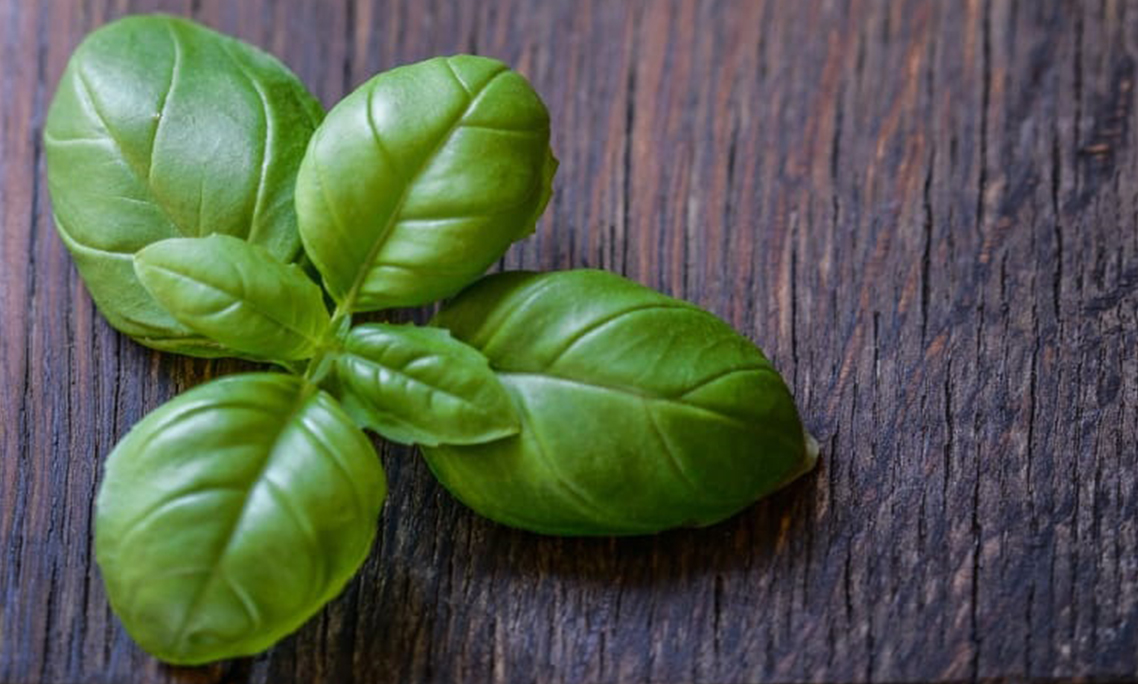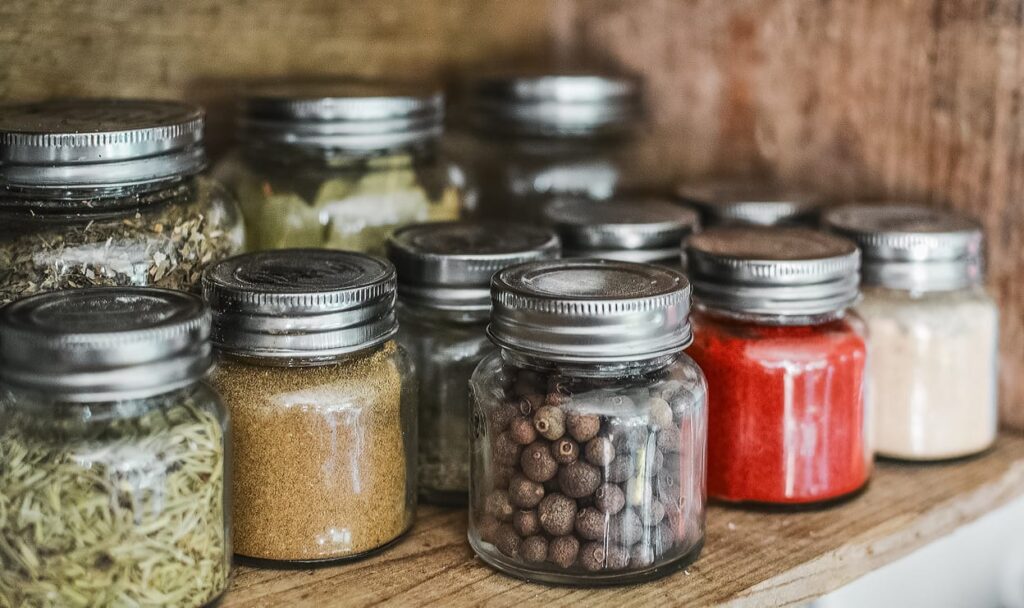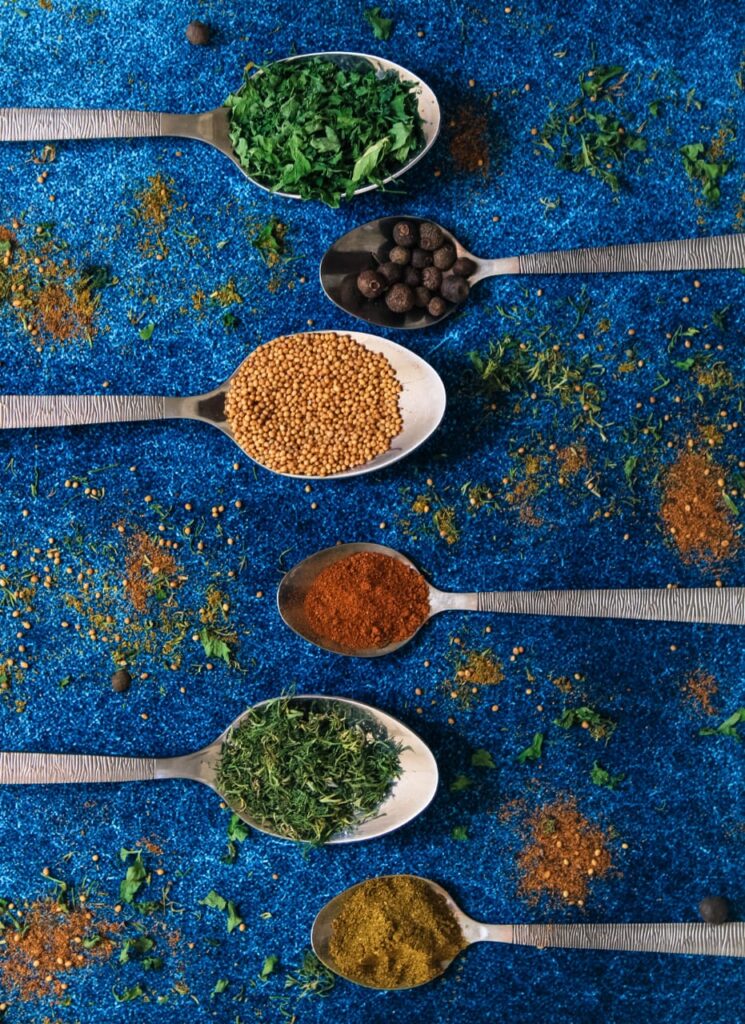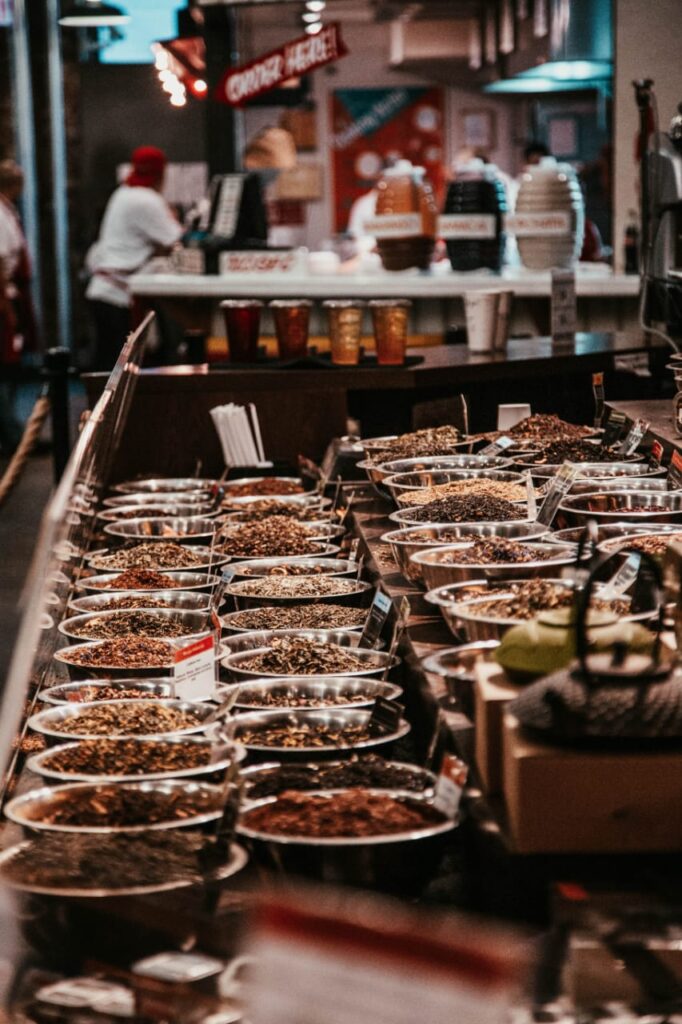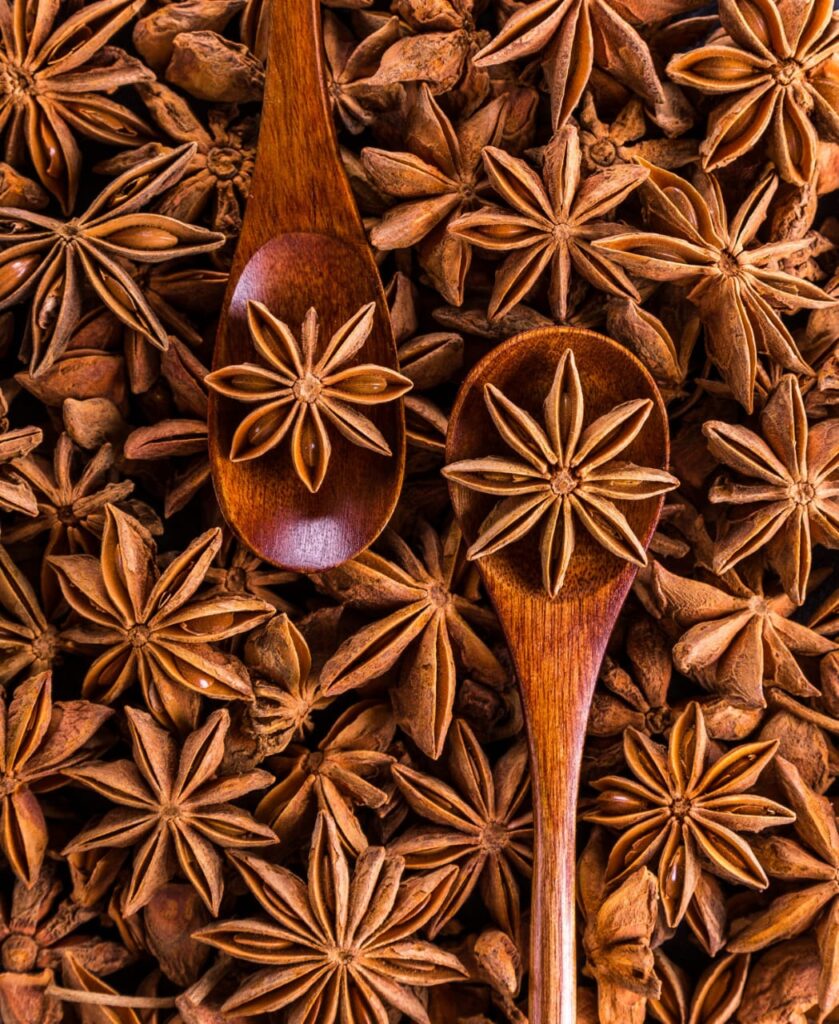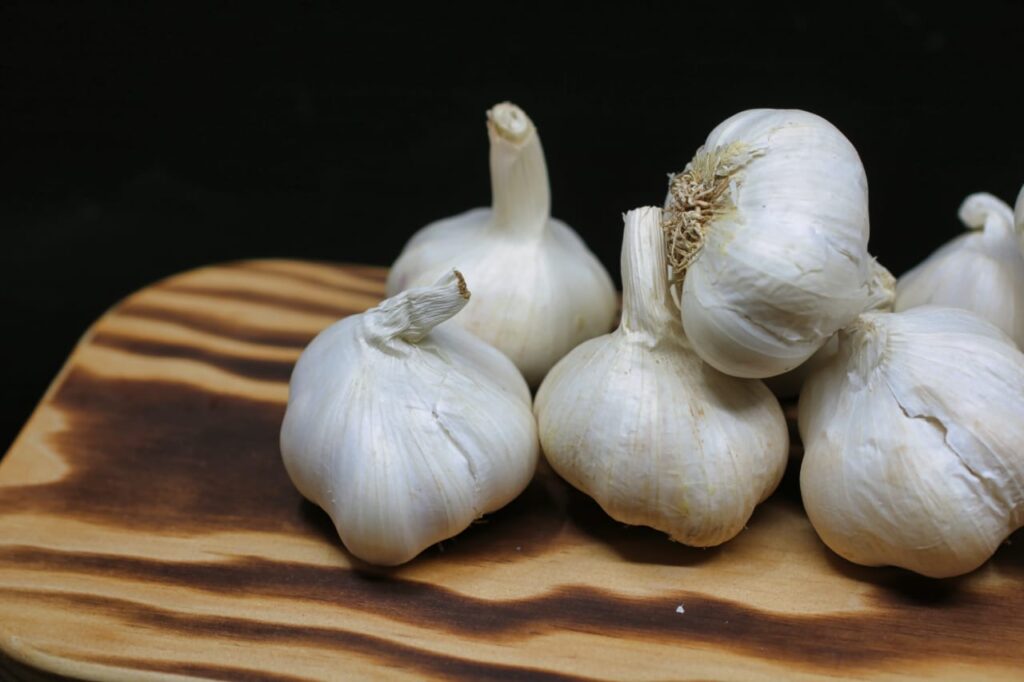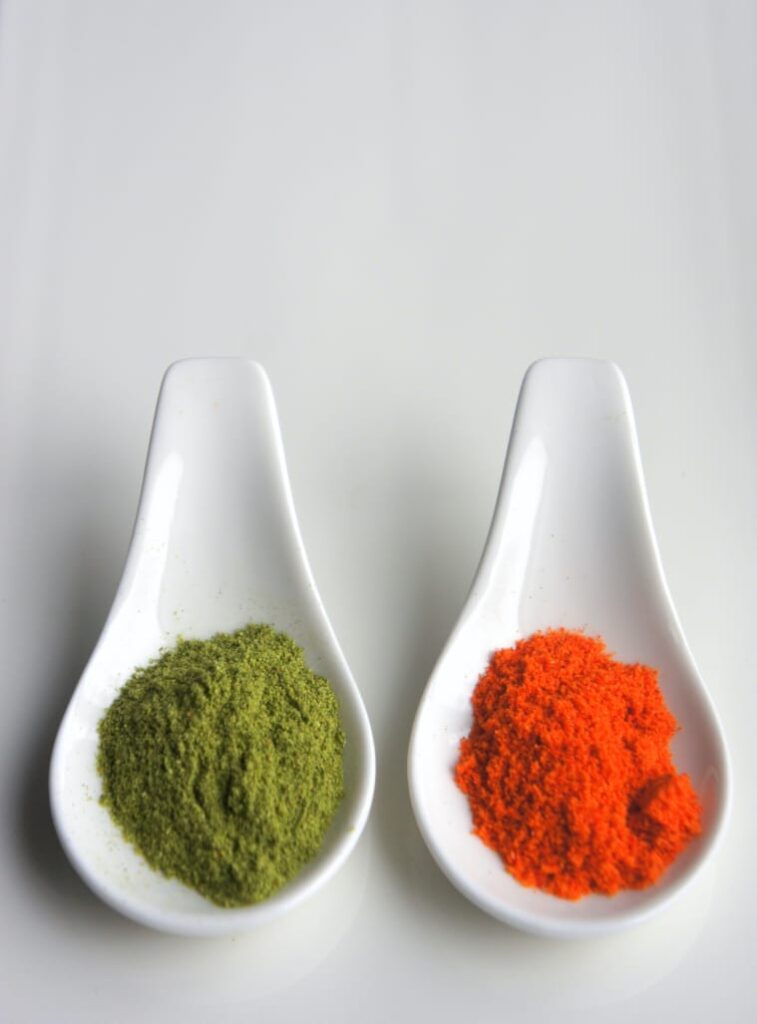Biljni začini su sastavni deo jela svih svetskih kuhinja, a njihova upotreba je povezana sa kulturom, tradicijom i kulinarskim navikama naroda.
Biljni začini su aromatično bilje koje koristimo u kulinarstvu, dodajemo ih jelima u svežem ili češće sušenom obliku, tj. u obliku praha, da bi smo poboljšali i obogatili ukus i miris jelima, ali i povećali hranjivu vrednost obroka.
Naime, biljni začini su veoma bogati vitaminima i mineralima i imaju brojna lekovita svojstva, te njihova upotreba deluje pozitivno na sveukupno zdravlje.
Najrasprostranjenija primena biljnih začina je u obliku praha, koji treba čuvati u dobro zatvorenim staklenim posudama, kako bi začini sačuvali svoj specifičan ukus i miris.
Uobičajeni biljni začini na našem podnevlju su:
Suvi biljni začin (mešavina suvog korenastog bilja: celera, šargarepe, paškanata i peršuna)
Aleva paprika (slatka ili ljuta, tucana, mlevana, sušena)
Beli luk
Biber
Peršun
Celer
Ren
Mirođija
Bosiljak
Vlašac
Korijander
Nana – menta
Majčina dušica
Matičnjak i dr.
Kao rezultat mešanja kultura i kuhinja naroda kroz istoriju, u crnogorskoj kuhinji se koriste i brojni egzotični biljni začini koji su uobičajeni u mediteranskoj, azijskoj ili indijskoj kuhinji.
Među njima se izdvajaju biljni začini: lovorov list, origano, ruzmarin, majoran, đumbir, kari, kajen paprika, kim, kurkuma, cimet, šafran, vanila, karanfilić, muskatni oraščić i dr.
U Crnogorskoj kuhinji najčešće se koristi suvi začin.
Suvi začin je usitnjena i osušena mešavina korenastog bilja, najčešće: šargarepe, paštrnaka, peršuna, celera i crnog luka. Ovoj mešavini može se dodati osušeni list cista celera, peršuna i mirođije.
Ponekad se mešavini dodaje i so u određenom procentu ili kurkuma u maloj količini i drugi biljni začini.
Birajte mešavine suvih biljnih začina koji ne sadrže aditive, konzervanse, pojačivače ukusa i veštačke arome.
Začini koji se često koriste u Crnogorskom kulinarstvu su i:
Aleva paprika koristi se prilikom pripremanja čorbi, soseva, gulaša, pasulja, sarmi i variva. Veoma je bogata vitaminom C i beta-karotenom, zatim vitaminima A i B, mineralima kalcijumom i kalijumom.
Beli luk se koristi najčešće u svežem obliku (iseckan ili isceđen u presi za beli luk) ili u obliku praha. Upotreba belog luka je u našem narodu veoma rasprostranjena i kao leka, jer deluje kao antiseptik, poseduje antibiotska svojstva, snižava krvni pritisak, poboljšava probavu.
Biber je najrasprostranjeniji i najpopularniji biljni začin, prisutan u svim svetskim kulturama. Primenjuje se u obliku praha ili u zrnu. Poznate su tri vrste bibera, crni, beli i crveni biber.
Biber pored toga što svojim pikantnim ukusom obogaćuje brojna jela, takođe olakšava varenje hrane, poboljšava krvotok i time zagreva telo. Odličan je kod prehlade jer pročišćava disajne puteve.
Peršun se uglavnom koristi u svežem ili suvom obliku. Savršeno se uklapa i gotovo je nazaobilazni dodatak svim jelima od povrća, supama, čorbama, sosevima i prelivima. Peršun je bogat vitaminom C i A, zatim vitaminima B grupe ( B1, B2) i vitaminom E.
Bosiljak ima umirujće dejstvo, opušta nerve i mišiće. Dodatno, pospešuje varenje i pojačava apetit.
Nana ima izrazito osvežavajući miris i ukus, pa se dodaje jakim i teškim jelima. Sveži listići nane dodaju se u pića sa limunom i /ili limetom, ali i kao dodatak kremovima i sladoledu. Nana se najčešće koristi sušena za prirpemu.
Za kraj vam preporučujem da obogatite svoju kolekciju suvih biljnih začina, da ih redovno dodajete kod pripeme jela, jer su blagodeti biljnih začina, kao što ste mogli da pročitate, brojne.
//
Herbal spices – an important part of a healthy diet
Herbal spices are an integral part of the dishes of all world cuisines, and their use is connected with the culture, tradition and culinary habits of the people.
Herbal spices are aromatic herbs that we use in cooking, we add them to dishes in fresh or more often dried form, ie. in the form of powder, in order to improve and enrich the taste and smell of dishes, but also to increase the nutritional value of meals.
Namely, herbal spices are very rich in vitamins and minerals and have numerous medicinal properties, and their use has a positive effect on overall health.
The most common use of herbal spices is in the form of powder, which should be stored in well-closed glass containers, so that the spices preserve their specific taste and smell.
Common herbal spices in our noon are:
Dry herbal spice (mixture of dried root herbs: celery, carrots, parsnips and primroses)
Aleva paprika (sweet or hot, crushed, ground, dried)
Garlic
Pepper
Parsley
Celery
Ren
Spices
Basil
Vlašac
Coriander
Mint – mint
Thyme
Matičnjak et al.
As a result of mixing cultures and cuisines of the people throughout history, Montenegrin cuisine uses numerous exotic herbal spices that are common in Mediterranean, Asian or Indian cuisine.
Among them, herbal spices stand out: bay leaf, oregano, rosemary, marjoram, ginger, curry, cayenne pepper, cumin, turmeric, cinnamon, saffron, vanilla, cloves, nutmeg, etc.
Dry spice is most often used in Montenegrin cuisine.
The dry spice is a chopped and dried mixture of root herbs, most often: carrots, parsnips, primroses, celery and onions. A dried leaf of cysts of celery, primrose and spice can be added to this mixture.
Sometimes a certain percentage of turmeric or other herbal spices and turmeric are added to the mixture.
Choose mixtures of dry herbal spices that do not contain additives, preservatives, flavor enhancers and artificial flavors.
Spices that are often used in Montenegrin cuisine are:
Aleva paprika is used in the preparation of soups, sauces, goulash, beans, sarma and stews. It is very rich in vitamin C and beta-carotene, then vitamins A and B, minerals calcium and potassium.
Garlic is most often used in fresh form (chopped or squeezed in a garlic press) or in powder form. The use of garlic is very widespread in our people as a medicine, because it acts as an antiseptic, has antibiotic properties, lowers blood pressure, improves digestion.
Pepper is the most widespread and most popular herbal spice, present in all world cultures. It is applied in the form of powder or grain. Three types of pepper are known, black, white and red pepper.
Pepper, in addition to enriching many dishes with its spicy taste, also facilitates digestion of food, improves blood circulation and thus warms the body. It is great for colds because it cleanses the airways.
Parsley is mostly used in fresh or dried form. It fits perfectly and is almost an unavoidable addition to all vegetable dishes, soups, stews, sauces and dressings. Parsley is rich in vitamins C and A, then B vitamins (B1, B2) and vitamin E.
Basil has a calming effect, relaxes nerves and muscles. In addition, it speeds up digestion and increases appetite.
Mint has a very refreshing smell and taste, so it is added to strong and heavy dishes. Fresh mint leaves are added to drinks with lemon and / or lime, but also as an addition to creams and ice cream. Mint is most often used dried for preparation.
Finally, We recommend that you enrich your collection of dry herbal spices, that you add them regularly when preparing meals, because the benefits of herbal spices, as you could read, are numerous.

